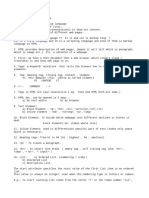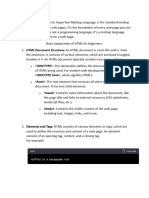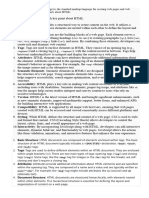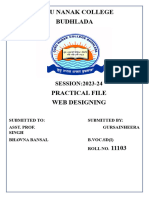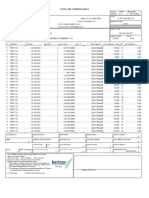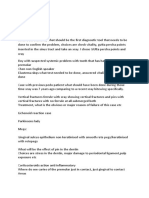0% found this document useful (0 votes)
28 views5 pagesFundemental Notes On HTML
This document provides foundational notes on HTML, explaining its purpose as the standard language for creating web pages and outlining the basic structure of an HTML document. It covers essential elements, common tags, attributes, semantic HTML, forms, and best practices for coding. Additionally, it includes resources for further learning and emphasizes the importance of accessibility and validation.
Uploaded by
muorongolejoshuaCopyright
© © All Rights Reserved
We take content rights seriously. If you suspect this is your content, claim it here.
Available Formats
Download as DOCX, PDF, TXT or read online on Scribd
0% found this document useful (0 votes)
28 views5 pagesFundemental Notes On HTML
This document provides foundational notes on HTML, explaining its purpose as the standard language for creating web pages and outlining the basic structure of an HTML document. It covers essential elements, common tags, attributes, semantic HTML, forms, and best practices for coding. Additionally, it includes resources for further learning and emphasizes the importance of accessibility and validation.
Uploaded by
muorongolejoshuaCopyright
© © All Rights Reserved
We take content rights seriously. If you suspect this is your content, claim it here.
Available Formats
Download as DOCX, PDF, TXT or read online on Scribd
/ 5












































